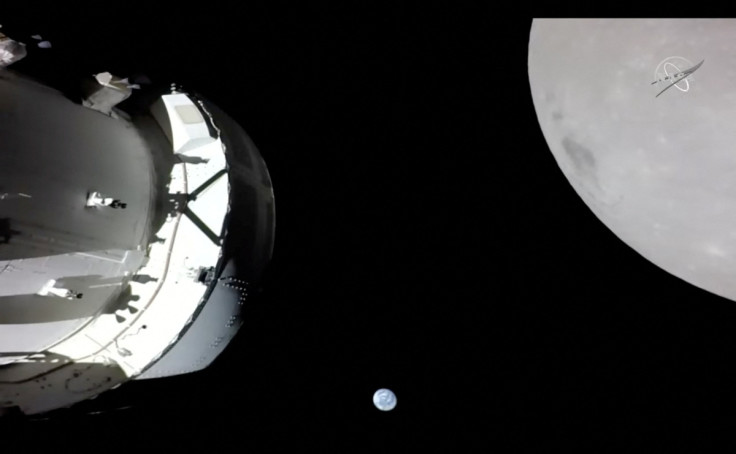'Crowning Achievement': Watch The Moment Orion Spacecraft Splashes Back Down To Earth
KEY POINTS
- The Orion spacecraft splashed down into the Pacific Ocean Sunday
- It traveled more than 1.4 million miles around the Moon and back
- It "exceeded expectations," according to Artemis I mission manager Mike Sarafin
The Orion spacecraft has finally returned to Earth after its historic Artemis I flight. The mission's "crowning achievement" even happened on a special Apollo anniversary.
The Orion spacecraft officially splashed down into the Pacific Ocean at 9:40 a.m. PST (12:40 p.m. EST) on Sunday, NASA confirmed in a press release. This comes after its historic 25.5-day mission wherein it traveled more than 1.4 million miles around the Moon and back.
In a video NASA shared of its momentous return, one can see the Orion spacecraft carried by parachutes moments before splashing down into the Pacific Ocean.
"Splashdown," the agency tweeted. "After traveling 1.4 million miles through space, orbiting the Moon, and collecting data that will prepare us to send astronauts on future Artemis missions, the NASA Orion spacecraft is home."
Splashdown.
— NASA (@NASA) December 11, 2022
After traveling 1.4 million miles through space, orbiting the Moon, and collecting data that will prepare us to send astronauts on future #Artemis missions, the @NASA_Orion spacecraft is home. pic.twitter.com/ORxCtGa9v7
NASA also gave a glimpse of what it would have been like aboard the Orion spacecraft as it headed for home, sharing a peek at the view from the spacecraft's docking hatch some 13 minutes prior to the splashdown.
POV: You're inside the @NASA_Orion spacecraft, looking through the docking hatch, and you're on your way home. #Artemis pic.twitter.com/j1oWNFTH54
— NASA (@NASA) December 11, 2022
"The splashdown of the Orion spacecraft — which occurred 50 years to the day of the Apollo 17 Moon landing — is the crowning achievement of Artemis I," NASA Administrator Bill Nelson said in the agency's press release. "Today is a huge win for NASA, the United States, our international partners and all of humanity."
Nelson also called the successful mission a "major step" for the next generation of lunar exploration. Indeed, even with all of Orion's achievements during the nearly month-long mission — including breaking an Apollo-era record — Artemis I is merely the first step toward bringing humanity back to the Moon.
The important data gathered during the uncrewed Artemis I, including those gathered by its "crew" of manikins, will certainly help inform the next step in the mission. Artemis II will then be NASA's first flight with a crew, taking the mission a step closer to the Artemis III goal of landing the first woman and the next man on the Moon.
.@NASA_Orion is back, and with it are our test manikins: Commander Moonikin Campos, Helga, and Zohar, who have been collecting data on what future #Artemis astronauts will experience during the flight.
— NASA (@NASA) December 11, 2022
Not to mention Snoopy, our zero-gravity indicator. https://t.co/bCHfJRHBJO pic.twitter.com/iHKvwZjMWD
So far, Orion "exceeded expectations" in the deep space environment, Mike Sarafin, Artemis I mission manager, said in the press release.
"This begins our path to a regular cadence of missions and a sustained human presence at the Moon for scientific discovery and to prepare for human missions to Mars," Jim Free, NASA's associate administrator for the Exploration Systems Development Mission Directorate, explained.
Those who would like to relive some of the milestones of the Artemis I mission may do so here. In the short clip shared by NASA, one can "ride along" with Orion, from liftoff to its breathtaking journey around the Moon.

© Copyright IBTimes 2025. All rights reserved.






















